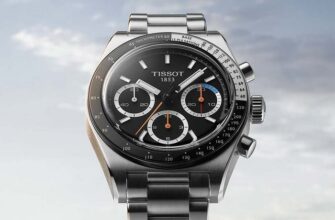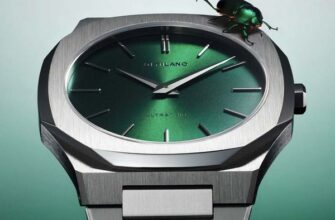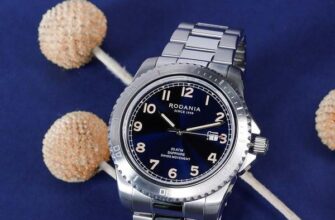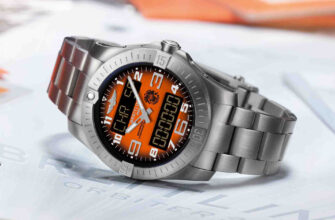Of all the watches, underwater ones are the hardest. The sea abyss is the most dangerous environment for a person, it threatens anyone who dares to plunge into it. It is also dangerous for watches that accompany their owners in scuba diving. Therefore, it is not surprising that underwater watches are a very special class of instruments for measuring time. And, of course, it is not surprising that their history coincides almost in detail with the history of underwater exploration.
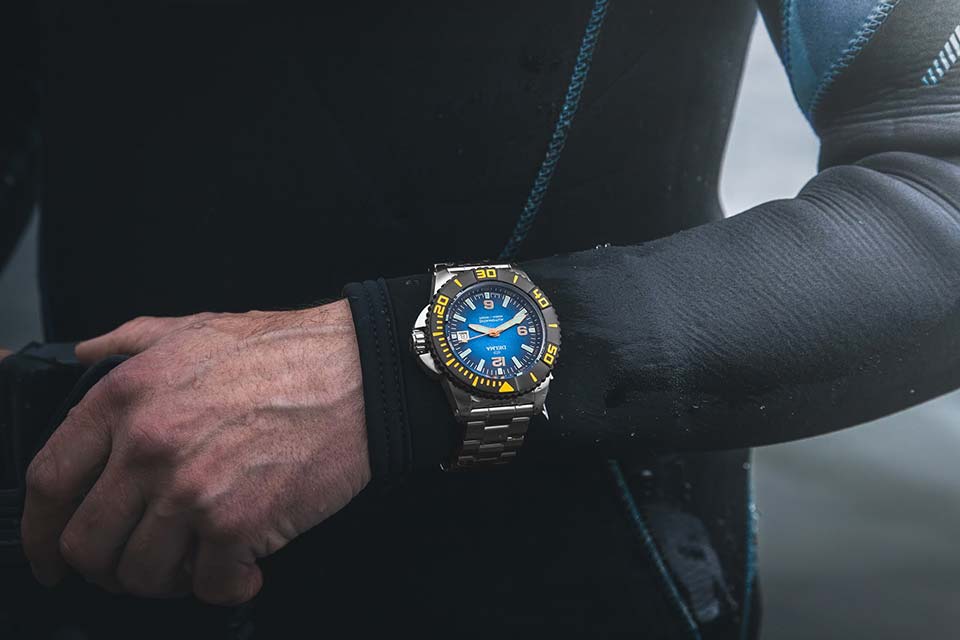
Breathe...deeper!
We are accustomed to seeing in watches both a work of art, and a witty technical invention, and the product of a master's skillful work. When we look at an old clock, we see a venerable old man who, on long winter evenings by candlelight, assembles clockwork from the smallest details. However, underwater watches evoke completely different associations in us.
If we digress from the appearance of underwater watches, then their fundamental feature is that they can go deep under water and return to the surface safe and sound. Technological progress has filled our lives with dangers. We would not have known about many of them if our age had not been so generous with all sorts of inventions. These dangers confronted man to his full height when technical progress called him into the depths of the sea.
Yes, we know that life began in the oceans, but for the last 500 million years, people still lived on land. Underwater watches were created as a link between a person and the earth's firmament, or rather, as a reminder of when a small piece of “home” would end, which a person took under water in cylinders on his back. To understand why a scuba diver cannot do without a watch, you need to understand a little what scuba diving is.
Water has always been close to man. Throughout its history, mankind has been looking for food on the shores of the seas and rivers, and the best confirmation of this is the oyster shells found by archaeologists at the sites of primitive people. However, a person not only approached the water's edge, but also plunged into it. The supply of air that he could take with him to the depth was determined by the volume of his lungs, which means that the dive time was calculated in seconds, at best minutes. Therefore, people were afraid to descend to depths below five to ten meters, unless, of course, we take into account individual madmen or fanatics who want to prove at any cost that human capabilities are endless.
Naturally, one fine day it dawned on someone: what if you breathe underwater, taking air from the surface, for example, through a tube? This is how the prototype of the modern diving tube appeared. And since rivalry and war are in the blood of a person, a simple device that allows you to stay under water for a long time was immediately used in military conflicts.
Herodotus mentions the Greek sailor Silis, who, having been captured by the Persians, rushed into the water and, breathing through a tube of reeds, cut the anchor ropes of enemy ships, sowing chaos and panic in the Persian armada.
The inventor of the simplest apparatus that allows a person to breathe underwater is considered Leonardo da Vinci. In his treatise, known as the Atlantic Code, he explained that he did not want to give a detailed description of his device, because he feared that it would be used for military or criminal purposes. On the one hand, it is difficult to understand the scrupulousness of a man who, among other things, is known for enthusiastically inventing one murder weapon after another. On the other hand, the doubts of the great Leonardo may have reflected the moral rejection of a future submarine war.
Man learned to move more or less freely under water only in the 19th century. Prior to that, he could stay under water for an unlimited time only while inside a diving bell (the principle of operation of this device is easy to understand if, after turning an ordinary glass, immerse it in a basin of water, the air inside the glass will be locked and will not be able to escape to the surface ).
However, neither the diving bell nor the submarine that appeared later could become the embodiment of the age-old dream of man - to swim under water like a fish. In both cases, he remained locked inside a cramped, confined space. Without a portable breathing apparatus, free movement in the depths of the sea was impossible.
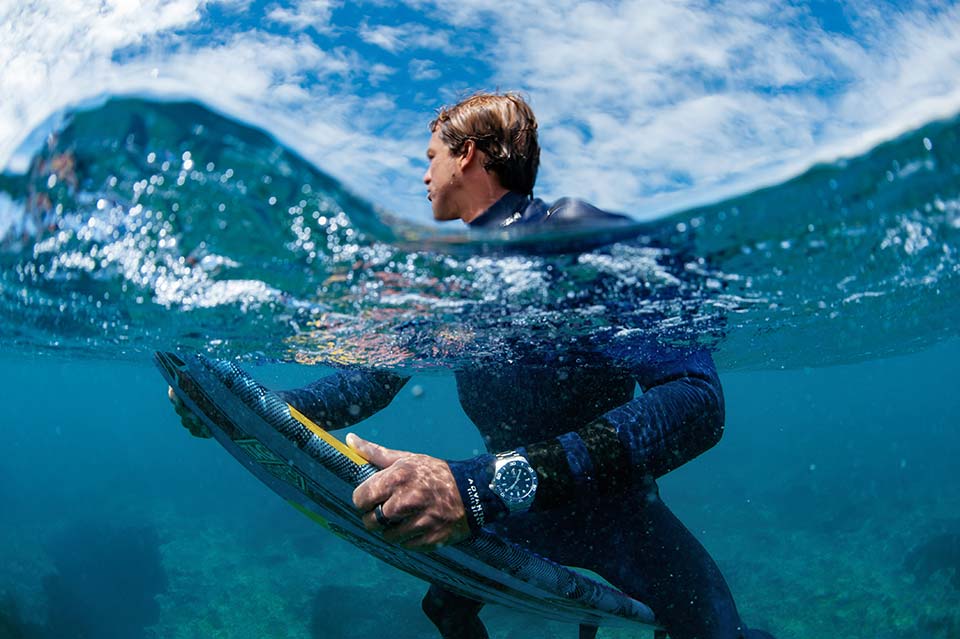
Lead shoes and diving suit
The divers who first went under the water did not have self-contained air tanks. Air was pumped in from the surface through a hose attached to a large spherical helmet with round portholes. This helmet was invented by the Prussian engineer August Siebe in 1837. The former artillery officer Siebe ended up in England after the Napoleonic wars, where he received an order for the manufacture of an underwater breathing device.
Siebe based his design on a helmet used by miners to breathe in the gassed atmosphere of the mine. Known today as heavy diving equipment, Siebe's invention included a helmet, a waterproof canvas suit, and lead-soled shoes. The fact is that a helmet, even filled with compressed air, weighed so much that without weighted shoes, a diver under water constantly risked turning upside down.
Today, diving suits with heavy copper helmets look like an anachronism, evoking the Jules Verne novels. However, for its time, Siebe's underwater equipment marked technological progress: it allowed the diver to stay and even work on the seabed, while enjoying relative freedom of movement. But a heavy suit with a helmet did not guarantee complete safety, and the number of divers who died in the depths of the sea was in the hundreds.
The main cause of accidents were flexible compressed air hoses - they often twisted and even torn. The danger was aggravated by the fact that the divers could not rise on their own, they were pulled to the surface on ropes, having received an alarm signal from the depth - a twitch of the signal rope. Anyone who dived into the sea, even to a shallow depth, knows that being under water without air is, to put it mildly, unpleasant.
It would seem that the faster a person is lifted from the depths, the more chances he has for salvation. However, divers often died not from the fact that they did not have time to raise them to the surface, but from the fact that they were raised too quickly. Why this happens was understood only at the beginning of the 20th century. However, for the first time, attention was paid to the mysterious "diving" disease not at sea, but on land. In the 40s of the 19th century, steam pumps appeared, with their help they began to pump compressed air into the mines in order to prevent the galleries from flooding with groundwater.
Soon they began to notice that the miners, rising from the face to the surface, complained of severe muscle cramps, attention disorder, joint pain. However, no explanation could be given for the mysterious symptoms at that time. Later, in the construction of bridges and port facilities, underwater work began to use caissons - concrete submersible chambers filled with compressed air.
Workers entered them through lock chambers, providing a pressure difference - inside and outside the caisson (the phenomenon of pressure difference can be illustrated using the simplest experiment: if you take the neck of a plastic bottle from carbonated water into your mouth and take a breath, the bottle will shrink under the influence of atmospheric pressure , the value of which is 760 mmHg at sea level).
The workers who worked long hours at great depths experienced the same strange symptoms as the miners - some died, some remained disabled for life. These symptoms were called decompression sickness. Decompression sickness was the cause of the divers' strange symptoms. During rapid ascent from depth, rapid decompression is the cause of the painful condition with characteristic muscle and joint pain. What this is will become clear if we recall our experience with a plastic bottle that was forced to shrink by a pressure difference. Unlike an empty bottle, the human body does not shrink. Why?
Because each of us literally consists of liquids - blood, cell protoplasm, liquid inter-articular lubrication - and the pressure that they create inside the body is able to "resist" atmospheric pressure. True, we must not forget about two circumstances.
First, every cell in our body needs oxygen, otherwise it will die. Inhaling, we absorb atmospheric air, which consists of 21% oxygen and 78% nitrogen (there are also impurities - various substances such as carbon dioxide and methane).
Secondly, the body of a person who is under the constant influence of the atmosphere is not a closed system. When we inhale air, we create internal pressure in our body, which is automatically compensated by atmospheric pressure. The pressures equalize, and thanks to this, we are able to draw air into the lungs. Without this alignment, atmospheric pressure of 100 N/m000 would crush the chest. Save us and gaseous substances dissolved in the blood and other fluids of our body, they also create pressure. Recall a bottle, but not empty, but filled with soda - while the bottle is closed, no bubbles of carbon dioxide are visible, since the gas is dissolved in water. But, if you unscrew the cap sharply, the soda literally boils (and often ends up on the trousers, not in the stomach), demonstrating how rapidly the high pressure inside the bottle equalizes with the low atmospheric one.
But this is in the air, but what will happen under water? There, the pressure is higher, and the diver has to use special breathing equipment that equalizes the pressure of the supplied air with the pressure of the environment. Why is this needed? The lower we go, the higher the pressure of the air entering the lungs must be. Otherwise, the chest, compressed from all sides by the pressure of the surrounding water, will not allow them to absorb air. However, the stronger the pressure of the inhaled air, the more the gas dissolves in the fluids of the human body.
If we rise to the surface correctly - slowly and evenly, making the necessary intermediate stops - the concentration of gaseous substances will decrease gradually (remember how a careful person opens a bottle of soda - slowly, gradually bleeding off the gas to prevent the rapid release of bubbles).
If we do not dive very deep or stay underwater for a short time, intermediate stops during the ascent are not necessary. However, after a long stay at great depths, you need to rise as slowly as possible, otherwise the diver's body will turn into a bottle of sparkling water, from which the cap was quickly torn off - all liquids inside the body will instantly boil with a rapid release of gas in the form of bubbles, resulting in a deadly barotrauma .
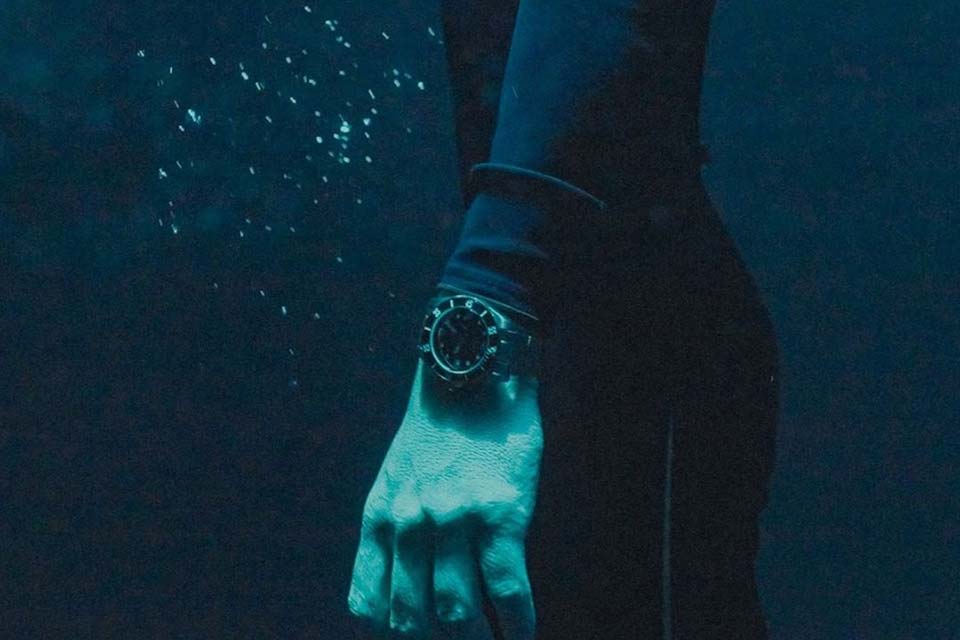
In the depths of the sea
To enjoy complete freedom of movement under water, a person had to get rid of everything that tied him to the surface. From the ropes on which divers were lowered under water and raised. From air hoses and telephone wires (which, by the way, first connected a diver to the surface during the First World War). But the most difficult task was to find a way to regulate the pressure of the breathing mixture - it, as we now know, must always be equal to the water pressure at the depth of the dive.
The task turned out to be really difficult; the air mixture pressure regulator (it is also called a pressure reducing valve) appeared only in 1937. It was invented by the Frenchman Georges Commen, who died at the end of World War II. By 1944, two other Frenchmen, engineer Emile Gagnan and Fleet Lieutenant Jacques-Yves Cousteau, head of the Navy's underwater research department, had developed their own pressure reducing valve.
Note that if Cousteau is well known to the general public, then the name of the inventor Ganyan, who proposed numerous, including truly revolutionary, diving devices, is unknown outside the professional circle. The Cousteau and Ganyan reducer was the first self-contained breathing device to be widely used. It was fully operational and ensured the safe stay of a person at depth. By the end of the war, under the name "Aqualung" (now this word, having lost quotes, has become a household name), it was already widely used by divers who participated in clearing French bays and clearing fairways from sunken ships.
However, not everyone knows that before the war, another device was invented, which subsequently had to make the same revolution in the exploration of the deep sea, which Cousteau and Ganyan's scuba diving made. We are talking about an exhaled air regenerator - a device that operates on the principle of a closed cycle and provides complete autonomy of the swimmer. Perhaps the most effective breathing device for scuba diving, the regenerator, like a conventional scuba gear, supplies compressed air to the diver's lungs. However, he has one important feature - he does not need bulky air tanks. Their role is performed by a gas cleaning cartridge with a substance that absorbs carbon dioxide.
Purified air, before getting into the lungs of a diver, is enriched with oxygen. The first regenerators were created in 1878 by Siebe, Gorman and Co. (its founder was the same Ziebe, the inventor of diving equipment). At the beginning of the 20th century, on the basis of this apparatus, Robert Davis, president of Siebe, Gorman and Co., developed an individual rescue apparatus for the evacuation of crews of sunken submarines, presenting it by 1910. After the First World War, the Davis apparatus gained popularity among Italian divers, fond of spearfishing, and then was adopted by the Italian and English fleets.
The interest in closed-loop breathing devices on the part of military sailors was quite understandable: firstly, the exhaust air remains in the apparatus, which means that there are no bubbles that, rising to the surface, can give out a saboteur-submariner, and secondly, the regenerator provides more the length of time a diver spends at depth than scuba. However, for various reasons, the operation of closed-loop devices is not reliable.
For all their merits, they are very complex, and, as you know, the more complex the device, the higher the risk of failure. Absorption of carbon dioxide or production of oxygen could suddenly stop, which threatened panic, convulsions and, which is especially dangerous under water, temporary loss of consciousness.
In the period from the post-war years to the present day, perhaps the only fundamentally important stage in the development of underwater technologies has been the use of artificial breathing mixtures. They solved a serious problem that swimmers faced during long dives: if you breathe in high-pressure ordinary air that contains nitrogen for a long time, then there is disorientation in space. In artificial mixtures, nitrogen was replaced by helium. In special underwater dwellings, inside which an increased pressure of air saturated with helium is maintained, a person can work for days and even weeks.
Another benefit of using special mixes is that they eliminate the need for long decompression climbs to the surface. Divers who are to breathe artificial respiratory mixture are previously kept in a pressure chamber, specially equipped on underwater work support vessels. Descent to depth also takes place in special high-pressure chambers. In them, divers are raised to the surface.
What are the maximum diving depths for a modern diver armed with such technical capabilities? The absolute world record with a closed-loop apparatus is 330 m. True, one must remember that even much smaller depths can be fraught with a mortal threat. It is believed that the limit of safe scuba diving is limited to 40 m, since when ascending from this level, the swimmer is not threatened by decompression, and he can rise to the surface quite quickly. Millions of amateur scuba divers dive to these depths without any unpleasant consequences.
The time spent under water is now calculated using underwater computers. However, they appeared quite recently, and divers have always wanted to know exactly how much time they have left. The watchmakers undertook the difficult task of creating reliable timekeeping devices under water, one might say, the day after the first daredevils began to dive into the depths of the sea.
In general, underwater watches are our old friends, and even now, in the age of electronics, it is not out of place to take them with you to the depths, even if the dive computer measures your time under water.

Leakage problem
We are accustomed to modern sports watches. Their durability and innumerable functions have made us forget that a clockwork is an extremely delicate device, with tolerances so close that its movement does not exceed a few seconds a day. About a hundred or more years ago, in order to protect watches from dust and water penetration into the case, they were sealed with beeswax, laying the latter between the watch case and the case back. Later, in the 30s, when the first wristwatches began to appear, many watchmakers looked at them skeptically as just another fad - isn't it stupid, they said, to make such a delicate mechanism hang out with the hand?
In 1926, a novelty appeared on the watch sky, the name of which is today almost synonymous with underwater watches. This year, Rolex founder Hans Wilsdorf launched the Oyster, a watch with a patented case featuring a screw-down crown and case back. Years have passed, Rolex is now known all over the world, and the case he invented has become an integral feature of any modern underwater watch. The Oyster had excellent water resistance, although Wilsdorf did not set himself the task of creating a diving watch.
The masters of the Cartier jewelry house did not strive for this either, presenting in 1931 the Etanche model, translated from French as “water-resistant”, however, like the Oyster, it has every right to be considered one of the first fully waterproof watches in the world. The Tank Etanche refutes the widely held belief that Cartier's first underwater watch was the Pasha. This name was given to the no less famous watch in honor of the pasha (mayor) of the Moroccan city of Marrakech, who, being a great lover of swimming in the pool, allegedly ordered a watch that was not afraid of water from the famous jewelry house.
In the mid-30s, according to Franco Cologna, Cartier's chronicler, the Etanche was the only waterproof watch in the brand's range, while the Pasha was created much later, in 1943. Be that as it may, the appearance of these waterproof models was an important step towards creation of a class of special underwater watches. Making the watch withstand water pressure at great depths was not an easy task, because even a few drops of water that got inside the watch case could cause irreversible corrosion.
"Rabies" was characteristic of the vast majority of watches produced in the 20th century, with a conventional, non-screwing case back. Since there was nothing worse than water for them, before washing their hands, they were removed and placed away from the water tap. Characteristically, today it is almost impossible to find an old clock with an ordinary cover and without rust; its traces, albeit insignificant, can be seen on the steel parts of the mechanism.
A reasonable question arises, why were watchmakers not interested in stainless steel, which appeared at the beginning of the 20th century? Alas, making gears, bridges and mainplates out of it was a very laborious task, since it is very reluctant to be machined and finished, and in fact, according to Swiss canons, satin and polishing of movement parts is an indispensable feature of high-class watches.
Today, almost all sports and diving watches have cases made of stainless steel, but the details of their movements are still made of ordinary steel. According to watch industry standards, a watch marked "water-resistant" must be splash-resistant and water-resistant enough that the wearer can take a dip in shallow water or, at the most, swim across the English Channel without removing it (as is known, Mercedes Gleitze, the first Englishwoman, accomplished this feat, she carried a Rolex Oyster).
The attitude towards professional-class underwater watches is more strict. We owe their appearance to a company named after the letter of the Greek alphabet. We are talking, of course, about Omega, which released its famous Marine watch in 1932. Of course, someone may object that this model was not at all specially designed for professional use under water, so it cannot be called underwater in the modern sense of the word.
Indeed, the Marine even visually differs from the classic diver's watch: it does not have a rotating bezel with minute graduations, and the crown and caseback are not screwed down. Still, Marine was a real underwater watch with excellent water resistance. The latter was provided in a very ingenious and innovative way - the Marine had a second hull, an inner one, which was inserted into the outer one. On the reverse side of the watch there was a latch lever, tightly fixing their assembled composite case, which ensured its complete tightness.
The Marine was also one of the first watches to feature a sapphire crystal. Their tests took place in Lake Geneva at an unprecedented depth of 73 m - no watch in the world has ever fallen so low. Then, in a laboratory in the Swiss town of Neuchâtel, the watch was placed in a pressure chamber, where it successfully withstood a pressure equivalent to that of water at a depth of 135 m. ISO for underwater professional watches.
For better or worse, technology develops most rapidly in wartime. World War II led to fierce competition between the designers of the warring powers: the development of special underwater equipment, such as guided transport torpedoes, which were to be used by saboteur swimmers, accelerated. Their units were formed in the fleets of the warring powers, primarily England and Italy.
During almost the entire period of the war, combat swimmers, if they used watches under water, then most often ordinary waterproof models. At that time, a certain type of underwater watch became widespread, the crown of which was protected by a hermetically screwed cap - in the manner of a thermos lid. Such watches were produced, in particular, by the American company Hamilton Watch Company.
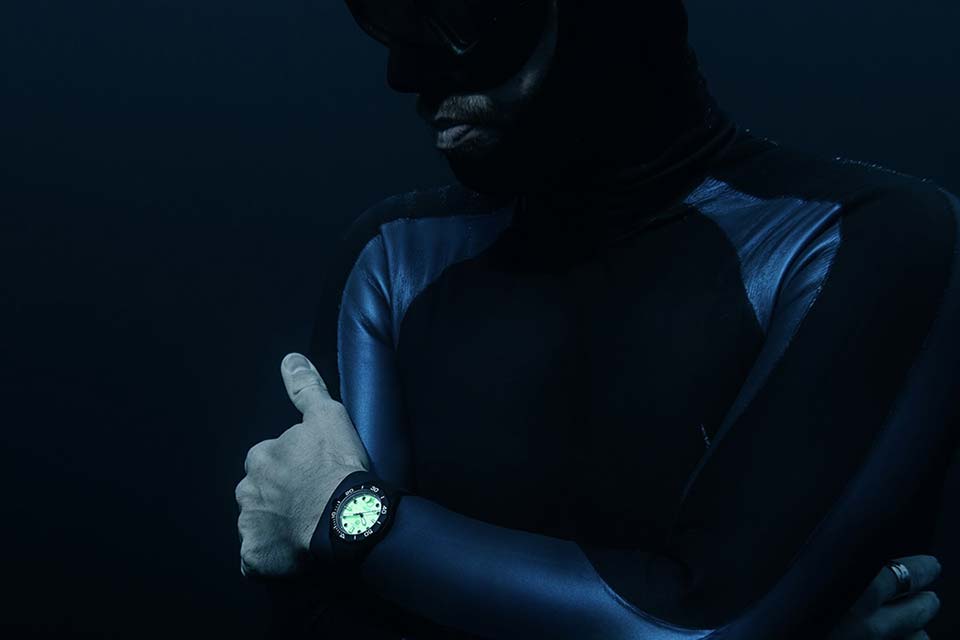
Modern underwater
The style of underwater watches, which can be conditionally called modern "classics", was formed in the 50s and 60s. At that time, the study of the deep sea became one of the most popular topics on television. In 1954, the Disney film adaptation of Jules Verne's science fiction novel "Twenty Thousand Leagues Under the Sea" was released on television. In 1958, Spearfishing, a multi-part adventure film, was launched, so popular that many of the actors who made their debut in it became TV stars. And in the 60s, a movie (and then a television series) “Journey to the bottom of the sea” appeared, which immediately made toys with an underwater theme popular. Surely some of you remember the famous movie about the smart dolphin Flipper ...
The development of scuba diving also continued. At first, only a handful of enthusiasts were engaged in it, who made home-made devices from improvised means - industrial valves, valves and other hydro-pneumatic fittings. But by the beginning of the 60s, scuba gear became available to thousands, and soon millions of diving enthusiasts around the world, and it turned into a popular sport. The watch industry did not lag behind. One after another, various models of underwater watches appeared on sale. Underwater watches began to be bought not only by scuba divers, but in general by all those who wanted to show off, hanging on their hands a catchy, strong, like a tank watch, hinting at the owner’s belonging to the category of real “divers”. In general, it seems that the effect of the availability of professional watches was directly related to the increase in the number of incorrigible romantics who, having acquired them, went on imaginary “underwater odysseys”.
Against the background of the massive distribution of underwater watches, rare and epoch-making models appeared. For example, in 1966, the famous Favre-Leuba Bathy 50 went on sale, becoming the world's first watch with a mechanical depth gauge. Their variation, the Bathy 160, differed only in that it showed depth in feet. These watches are almost impossible to find today. Only connoisseurs remember Jenny Caribbean today, but in the 60s it released a record underwater watch, which for the first time in the world dropped to the symbolic mark of 1 m.
Scientists did not lag behind watch manufacturers: they solved the mystery of the saturation of our tissues with gases that are part of the air circulating in the breathing apparatus. This made it possible to expand the use of artificial respiratory mixtures - first as part of the experiments of the US Navy (which worked in the early 60s on the creation of the Sealab underwater dwelling, and then in industry, where the American company Westinghouse and the French Company Maritim d'Expertise were the first to become interested in them). ". The collaboration of the latter with Rolex led to the creation of special watches for divers using artificial mixtures. Unlike ordinary air, which is pumped into scuba tanks, an artificial mixture does not contain nitrogen, but helium. Helium atoms are able to penetrate inside the watch, bypassing any kind of seal, and accumulate in the cramped volume of the case.During the rise, the rapidly increasing pressure difference can damage or even knock out the glass of the watch.The solution to this problem was found by Rolex, who invented a special release valve for helium.
The first watch to be equipped with a helium valve was the Sea Dweller in 1971.
In the late 60s, Seiko began production of underwater "machines", which immediately became very popular due to their durability, reliability and very affordable price. The number of these watches, sold around the world, is in the millions, they are worn by both professionals and ordinary diving enthusiasts.
In 1975, the Japanese watch industry giant released the Pro Diver, the world's first mass-produced high-tech watch in a massive (51 mm) titanium case, capable of operating at depths up to 600 m. An ingenious gland seal prevented helium from penetrating into the case. With the advent of portable decompression mode calculators in the arsenal of divers (this device takes into account and shows the amount of absorbed nitrogen on the display), there is no need to count the time of ascent to the surface.
It may seem that the age of classic underwater watches has passed, that today they are of interest only to lovers of expensive mechanical anachronisms and that such watches on the hand of a modern professional look as ridiculous as a silk scarf of a World War I ace on the neck of a modern jet fighter pilot.
Fortunately, this is not the case. The design of underwater watches is constantly being improved. Today they are much better adapted to the existence in the depths of the sea, not forgiving even the slightest mistake. The pioneers of diving - Jacques Cousteau, William Beebe and August Sieba himself could not even dream of a modern watch with an incredible degree of protection by old standards. Today's underwater watches are not afraid of either water pressure or corrosion.

